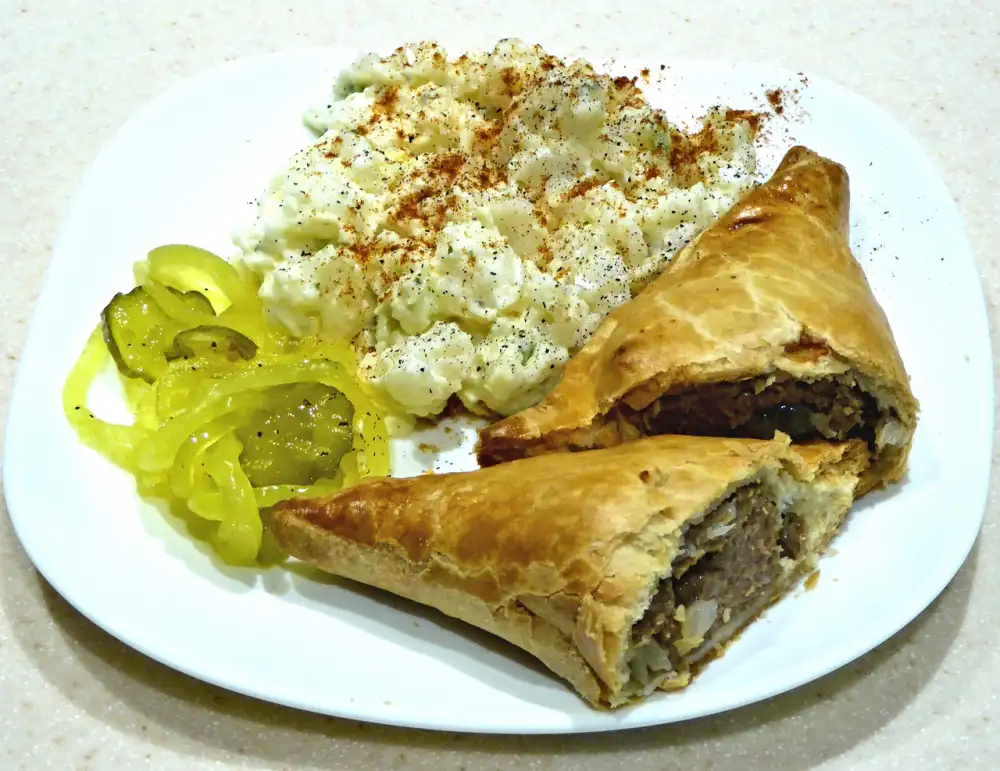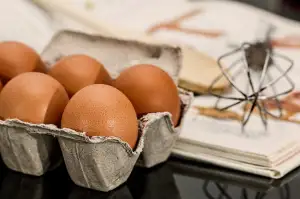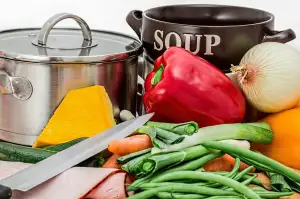Authentic Cornish Pasty Recipe: A Taste of Cornwall's Culinary Delight

Cornish pasty is a delicious and hearty pastry dish that hails from the beautiful region of Cornwall in southwest England. This iconic dish has gained popularity not only in the UK but also around the world for its unique flavors and satisfying nature. The Cornish pasty is a true culinary treasure, loved by locals and visitors alike. Its golden crust, filled with a savory mixture of meat, vegetables, and seasonings, makes it a perfect meal or snack for any occasion. Join us on a culinary journey as we explore the history, ingredients, recipe, and serving suggestions of this delightful Cornish delicacy.
History and Origin of Cornish Pasty
The Cornish pasty is a beloved culinary delight that originates from Cornwall, a county in the southwestern part of England. This humble yet delicious pastry has a rich history that dates back centuries. It is believed to have been created as a convenient and portable meal for tin miners who needed a hearty and filling lunch during their long shifts underground.
The exact origin of the Cornish pasty is unclear, but it is thought to have emerged in the 17th or 18th century. The pasty quickly gained popularity among the working class due to its practicality and delicious taste. It was not only enjoyed by miners but also by fishermen and farmers who needed a nourishing meal while out in the fields or at sea.
Legend has it that the distinctive shape of the Cornish pasty was designed with a purpose. Its half-moon shape with crimped edges allowed miners to hold onto the crust without touching the filling, which was often filled with meat and vegetables. This made it easy for them to enjoy their meal without dirtying their hands, as well as discard the crimped edge, which was considered inedible due to being contaminated with arsenic from their fingers.
Over time, the Cornish pasty became synonymous with Cornwall's identity and heritage. In fact, it was granted Protected Geographical Indication (PGI) status by the European Commission in 2011, recognizing its historical significance and ensuring that only pasties made in Cornwall following traditional methods can be called "Cornish pasties."
Today, the Cornish pasty continues to be cherished both within Cornwall and beyond. Its rich history and cultural significance make it more than just a tasty treat – it represents a connection to Cornwall's mining heritage and serves as a symbol of local pride.
Traditional Ingredients used in Cornish Pasty
The traditional Cornish pasty is made with a simple yet flavorful combination of ingredients. The key components include beef, potatoes, onions, and swede (also known as rutabaga). These ingredients are diced into small cubes and mixed together to create a delicious filling.
The beef used in the pasty is typically skirt or chuck steak, which is tender and full of flavor. It is important to use good quality beef to ensure the best taste. The potatoes add a comforting texture and help bind the filling together.
Onions provide a sweet and savory flavor to the pasty, while swede adds a slightly earthy taste. The combination of these vegetables creates a harmonious balance of flavors that is characteristic of the Cornish pasty.
To enhance the flavors, traditional recipes often include seasoning such as salt, pepper, and sometimes even a pinch of dried herbs like thyme or rosemary. However, it's important not to overpower the natural flavors of the main ingredients.
These traditional ingredients are encased in a pastry shell that is both flaky and sturdy enough to hold the filling without becoming soggy. The pastry is usually made with flour, butter or lard, water, and sometimes an egg for added richness.
By using these classic ingredients in your Cornish pasty recipe, you can experience the authentic taste that has been enjoyed by generations in Cornwall.
Step-by-Step Recipe for Cornish Pasty
1. Start by preparing the pastry dough. In a mixing bowl, combine 2 cups of all-purpose flour, a pinch of salt, and ½ cup of cold butter. Rub the butter into the flour until it resembles breadcrumbs.
2. Gradually add ice-cold water, a tablespoon at a time, and mix until the dough comes together. Form it into a ball, cover with plastic wrap, and refrigerate for 30 minutes.
3. Meanwhile, prepare the filling. In a separate bowl, combine 1 lb of diced beef skirt or chuck steak with 1 diced onion, 2 diced potatoes, and 1 diced carrot. Season with salt and pepper.
4. Roll out the chilled dough on a floured surface to about ¼ inch thickness. Cut out circles using a plate as a guide.
5. Place a generous amount of filling on one half of each circle, leaving space around the edges. Fold over the other half to enclose the filling and crimp the edges with your fingers or a fork to seal.
6. Preheat your oven to 400°F (200°C). Place the pasties on a baking sheet lined with parchment paper.
7. Beat an egg in a small bowl and brush it over each pasty to give them a golden color when baked.
8. Bake for about 40-45 minutes or until the pasties are golden brown and cooked through.
9. Remove from the oven and let them cool slightly before serving.
Enjoy these delicious Cornish pasties hot or cold as an appetizer or main course!
Variations and Modern Twists on Cornish Pasty
While the traditional Cornish pasty recipe remains a cherished culinary delight, there have been some modern twists and variations that have emerged over time. These variations add a unique twist to the classic pasty while still maintaining its authentic flavors.
One popular variation is the vegetarian or vegan Cornish pasty, which replaces the traditional meat filling with a combination of vegetables like potatoes, carrots, onions, and peas. This provides a delicious and nutritious alternative for those who prefer plant-based options.
Another modern twist is the addition of different herbs and spices to enhance the flavor profile of the pasty. Some chefs experiment with adding thyme, rosemary, or even curry powder to give their pasties an extra kick of flavor.
For those looking for a more gourmet experience, there are also upscale versions of the Cornish pasty available. These may include fillings like lobster, crab, or even truffles for an indulgent treat.
In recent years, fusion cuisine has also made its way into the world of Cornish pasties. Chefs have experimented with incorporating flavors from other cuisines such as Mexican or Indian into their pasties. This fusion of flavors adds an exciting twist to this traditional dish.
Regardless of these modern twists and variations, it's important to remember that at its core, the Cornish pasty remains a symbol of Cornwall's culinary heritage. Whether you choose to stick with tradition or explore new flavor combinations, each bite will transport you to the picturesque landscapes and rich history of Cornwall.
Serving Suggestions and Pairings for Cornish Pasty
When it comes to serving suggestions and pairings for Cornish Pasty, there are a few options that complement this delicious dish perfectly. Traditionally, Cornish Pasty is enjoyed on its own as a hearty meal. However, if you're looking to enhance the flavors and create a more complete dining experience, consider serving it with some simple side dishes. A fresh green salad or steamed vegetables can add a refreshing element to balance out the richness of the pastry and filling. Additionally, a dollop of tangy tomato chutney or a spoonful of creamy coleslaw can provide a delightful contrast of flavors. For those who prefer something heartier, serving Cornish Pasty with mashed potatoes or roasted root vegetables can create a comforting and satisfying meal. As for pairings, a crisp and refreshing cider or an amber ale would be an excellent choice to accompany the savory flavors of the pasty. If you prefer non-alcoholic options, opt for a sparkling apple juice or even a cup of English breakfast tea. The key is to choose beverages that won't overpower the delicate flavors of the pasty but will still complement them nicely. So whether you decide to enjoy your Cornish Pasty on its own or pair it with some sides and drinks, be prepared for an unforgettable culinary experience that truly captures the essence of Cornwall's traditional cuisine.
Tips and Tricks for Making the Perfect Cornish Pasty
1. Use chilled ingredients: It is important to keep the pastry and filling ingredients cold before assembling the pasty. This helps to achieve a flaky and tender crust.
2. Don't overfill: Be mindful not to overstuff the pasty with filling, as it can lead to a soggy crust. Leave enough room for the pastry to seal properly.
3. Crimping technique: Master the traditional crimping technique by folding the edges of the pastry together and pinching them tightly. This ensures that the filling stays intact while baking.
4. Ventilation holes: Make small slits on top of the pasty to allow steam to escape during baking. This prevents any potential bursting or leaking of filling.
5. Egg wash for golden crust: Brushing an egg wash on top of the pasty before baking gives it a beautiful golden color and adds an extra layer of flavor.
6. Resting time: Allow the assembled pasties to rest in the refrigerator for at least 30 minutes before baking. This helps to relax the gluten in the pastry, resulting in a more tender crust.
7. Baking temperature and time: Preheat your oven to 200°C (400°F) and bake the pasties for about 45-50 minutes, or until they are golden brown and cooked through.
8. Cooling time: Let the baked pasties cool slightly before serving, as this allows them to set and makes them easier to handle.
By following these tips and tricks, you will be able to create delicious Cornish pasties that are true culinary delights!
In conclusion, the Cornish Pasty is a true culinary delight that encapsulates the rich history and flavors of Cornwall. With its humble origins as a portable meal for miners, it has evolved into a beloved dish enjoyed by people around the world.
By using traditional ingredients such as beef, potatoes, onions, and swede, you can recreate the authentic taste of a Cornish Pasty in your own kitchen. The flaky pastry crust encases a hearty filling that is both comforting and satisfying.
While there are variations and modern twists on the classic recipe, it's important to stay true to the essence of this iconic dish. Experimenting with different fillings or shapes can be fun, but nothing beats the simplicity and nostalgia of an authentic Cornish Pasty.
When serving your Cornish Pasty, consider pairing it with a fresh salad or pickles for added texture and flavor. And don't forget to enjoy it with a pint of local ale or cider for a truly authentic experience.
Whether you're visiting Cornwall or simply want to bring a taste of this beautiful region into your home, mastering the art of making Cornish Pasties will allow you to savor the true flavors of Cornwall. So gather your ingredients, follow our step-by-step recipe, and indulge in this delightful treat that has stood the test of time.
Published: 03. 01. 2024
Category: Recipes



